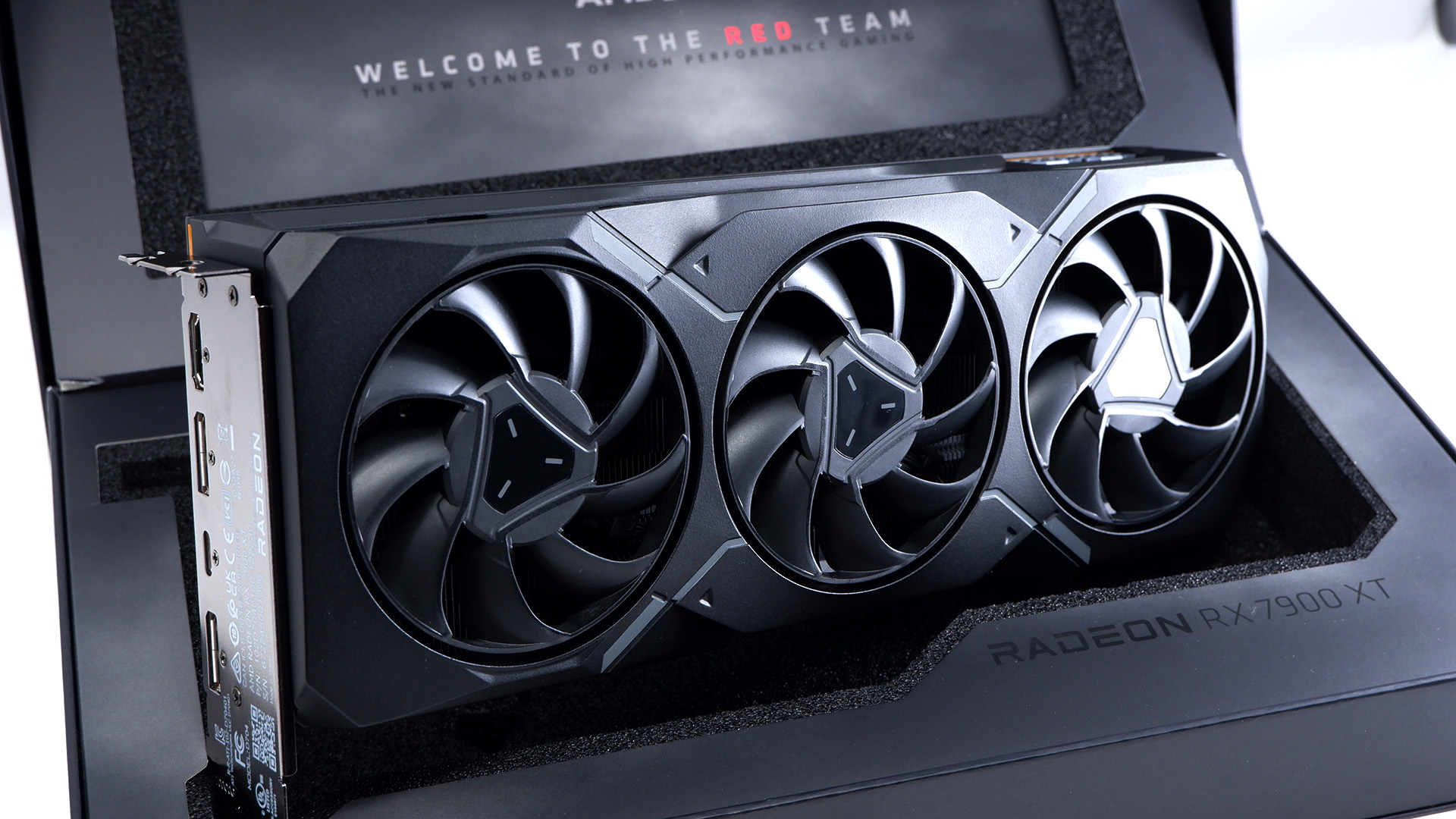
This sounds like bad news, but is it actually?
AMD’s next-gen RDNA 4 graphics won’t compete with Nvidia at the high end. So, says the latest rumour from Twitter poster Kepler. Cue mass hysteria among PC enthusiasts, cats and dogs living together, basically the end of days. Superficially, it sounds like very bad news. But is it, is it actually?
Twitter account Kepler is one of the more reliable sources of graphics tech leaks, so the post certainly should be taken on some merit. But what does it mean if it is actually true? Broadly, there are two interpretations, one pretty positive, the other pretty much a catastrophe.
Interpretation one says that high-end GPUs are irrelevant to 99 percent of gamers and that AMD focussing on affordable graphics cards is actually a good thing. Give us 75 percent of the performance of a high-end Nvidia GPU for half the money, AMD, and everything looks pretty sweet.
Maybe that should be half the performance for a quarter of the money, these days. Whatever, the basic idea makes sense and AMD has form in this regard. It was only two generations ago that AMD didn’t bother at the high end, limiting its RDNA 1 family to the Radeon RX 5700 XT and pricing it between the Nvidia RTX 2060 and 2070 cards.
AMD did pretty much the same thing with its GCN-based Polaris chips in the Radeon RX 400 and 500 series. The RX 480 launched in summer 2016 at $239, shortly after Nvidia wheeled out its mighty $659 GeForce GTX 1080. The RX 580 and latterly RX 590 were the same. They didn’t take the fight to Nvidia at the high end.
Navi4 equals RDNA 4, but does it also spell doom for AMD graphics? (Image credit: Future)
Go back even further to the still-just-about-ATI era and the Radeon HD 4870 of 2008, and something similar happened. That card clocked in at $299 to Nvidia’s GeForce GTX 280 at $650.
With all that in mind, AMD not bothering at the high end would be nothing new and therefore nothing to panic about. If AMD can deliver great graphics cards in the roughly $250 to $500, really who cares what Nvidia does for $1,500 or more? Hardly anybody can afford that high-end stuff.
On the other hand, there’s the sense that AMD would like to compete at the top table of graphics cards, but just keeps on failing. There were rumours of a much faster RDNA 1 card, let’s call it the 5900 XT, that never ultimately appeared.
Meanwhile the 6900 XT did arrive in 2019 and was pretty competitive right at the very top. The new RX 7900 XT and RX 7900 XTX clearly were an attempt to compete with Nvidia’s RTX 4090, but that ended up a little short of their target.
Helps us, Battlemage, you’re our only hope. (Image credit: Disney)
Generally, there’s no denying AMD’s GPU efforts are a bit hit and miss. For instance, where is AMD in gaming laptops right now? It has almost exited that market in discrete GPU terms, for all current and practical purposes.
Thus, catastrophists will see RDNA 4’s rumoured failure to compete at the high end as the next step on the way to AMD also exiting the desktop gaming GPU market. Instead, AMD will focus on console graphics and APUs, leaving the desktop gaming graphics market to Nvidia.
Well, Nvidia and just maybe Intel. But Intel’s Arc GPUs have hardly taken the market by storm. And if AMD can’t compete with Nvidia, what odds Intel?
(Image credit: Future)
Best CPU for gaming: The top chips from Intel and AMD
Best gaming motherboard: The right boards
Best graphics card: Your perfect pixel-pusher awaits
Best SSD for gaming: Get into the game ahead of the rest
In the end, it’s impossible to know how this will all play out. It’s difficult to even know what AMD intends. If there are no high end RDNA 4 GPUs, is that because AMD tried and failed as seemed to be the case with RDNA 1? Or is it all an intentional strategy from the get-go?
One real possibility is that Nvidia doesn’t actually make money with GPUs like the RTX 4090, even priced at $1,600. Nvidia sells the AD102 GPU, as used the RTX 4090, for $6,800 in professional graphics cards and for $8,000 in server cards. Okay, those cards have twice the VRAM at 48GB, but that doesn’t add $5,000 to the cost on its own.
The point is that AD102 is a huge chip and will be very expensive to manufacture. So, maybe the RTX 4090 is a GeForce loss leader even at $1,600, and maybe Nvidia loses money on every RTX 4090 but trades that off against the branding upside of being able to claim the top gaming performance crown?
And maybe that’s just not a game AMD wants to get involved in. After all, coming second and losing money on every card really would be pointless.




